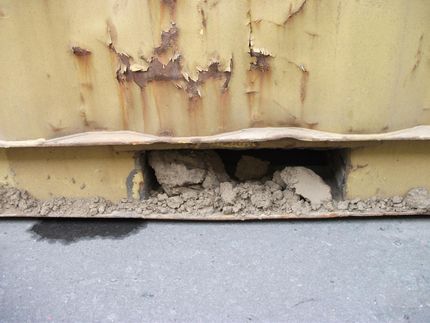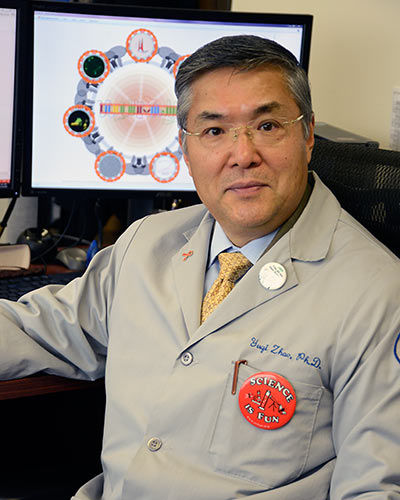A nematode and fungus team up to damage soybean
Julius-Kühn-Institute publishes model of the damage potential of Sudden-Death-Syndrome
Advertisement
For years a disease complex of a plant-parasitic nematode and fungal pathogen has damaged soybean fields in the Midwest of the USA. Recently Dr. Andreas Westphal of the Julius-Kühn-Institute (JKI) and his American collaborator Dr. Lijuan Xing provided mathematical evidence for the synergistic nature of the interaction of Heterodera glycines and Fusarium virguliforme (Xing and Westphal, 2013, JPDP 120:209-217). Crop rotation offers no remedy against the teamed up pathogens. Now, the international author group quantified the specific role of the two pathogens in disease severity. This report was published in PLOS ONE.

Canopy view of diseased and healthy soybean leaves.
: A.Westphal/Julius-Kühn-Institute
In collaboration with researchers from Australia, China and the US, microplot studies were conducted in Indiana. “The data were used to model the role of the fungal pathogen and the nematode quantitatively when causing the disease “, reports Westphal. This type of information enables us to predict the occurrence of sudden death syndrome and the severity of the disease.
“We gained insight how this important disease complex functions, while severely damaging the soybean-plants. In addition we developed new detection and quantification methods. These methods are critical for investigating and exploiting efficient management strategies of this still spreading disease“, summarizes Westphal.
Other news from the department science

Get the life science industry in your inbox
By submitting this form you agree that LUMITOS AG will send you the newsletter(s) selected above by email. Your data will not be passed on to third parties. Your data will be stored and processed in accordance with our data protection regulations. LUMITOS may contact you by email for the purpose of advertising or market and opinion surveys. You can revoke your consent at any time without giving reasons to LUMITOS AG, Ernst-Augustin-Str. 2, 12489 Berlin, Germany or by e-mail at revoke@lumitos.com with effect for the future. In addition, each email contains a link to unsubscribe from the corresponding newsletter.



























































